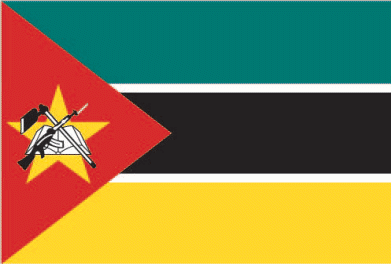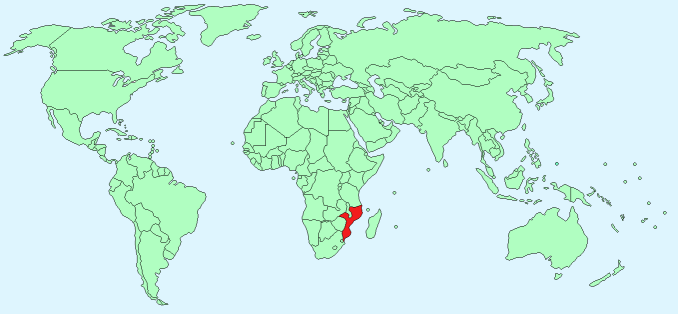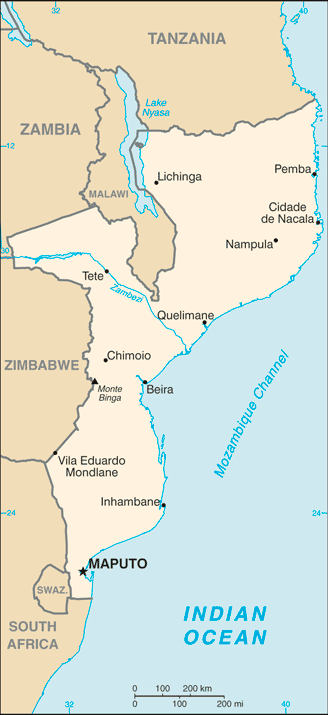Mozambique


Continent – Africa
Region – Southern Africa
Size – 799,380 km²
Geography – coastal lowlands with hills in the west
Language – Emakhuwa 25.3%Portuguese (official) 10.7%, other local languages 64%
Religion – Roman Catholic 28.4%, Muslim 17.9%, Zionist Christian 15.5%, Protestant 12.7%, none 18.7%, other 6.8%
Monetary Unit – Mozambican metical
Natural Resources – coal, titanium, natural gas, hydropower, tantalum, graphite
Agriculture – cotton, cashew nuts, sugarcane, tea, cassava (manioc, tapioca), corn, coconuts, sisal, citrus and tropical fruits, potatoes, sunflowers; beef, poultry
Industry – aluminum, petroleum products, chemicals (fertilizer, soap, paints), textiles, cement, glass, asbestos, tobacco, food, beverages

Neighbouring Countries – Tanzania, Malawi, Zambia, Zimbabwe, Swaziland, South Africa
Population – 25,303,113 (2014)
Population Growth Rate – 2.45%
Average Life Expectancy – 52.94
Capital City – Maputo (population 1,174,000)
Highest Mountain – Monte Binga (2,436 m)
Longest River – Zambezi (2,650)
Climate – Warm winters 15°C to 20°C and hot summers 25°C to 32°C
Yearly Rainfall – 150cm mainly in Zambezi region and mainly November to March
Plant Life – ebony, mahogany, ironwood, grasses, mangrove, rainforest species
Animal Life – elephant, buffalo, wildebeest, zebra, palapala, hippopotamus, lion, crocodile, tortoise, monkey
Bird Life – ostrich, penguin, grebe, albatross, pelican, petrel, stork, flamingo, ducks, geese, swans, buzzard, gulls, terns, cuckoo, parrots, macaws
Harvard Reference for this page:
Heather Y Wheeler. (2015). Mozambique. Available: https://www.naturalhistoryonthenet.com/Facts_Figures/Country_Facts/mozambique.htm. Last accessed Tuesday, July 19, 2016
Facts and Figures Pages
